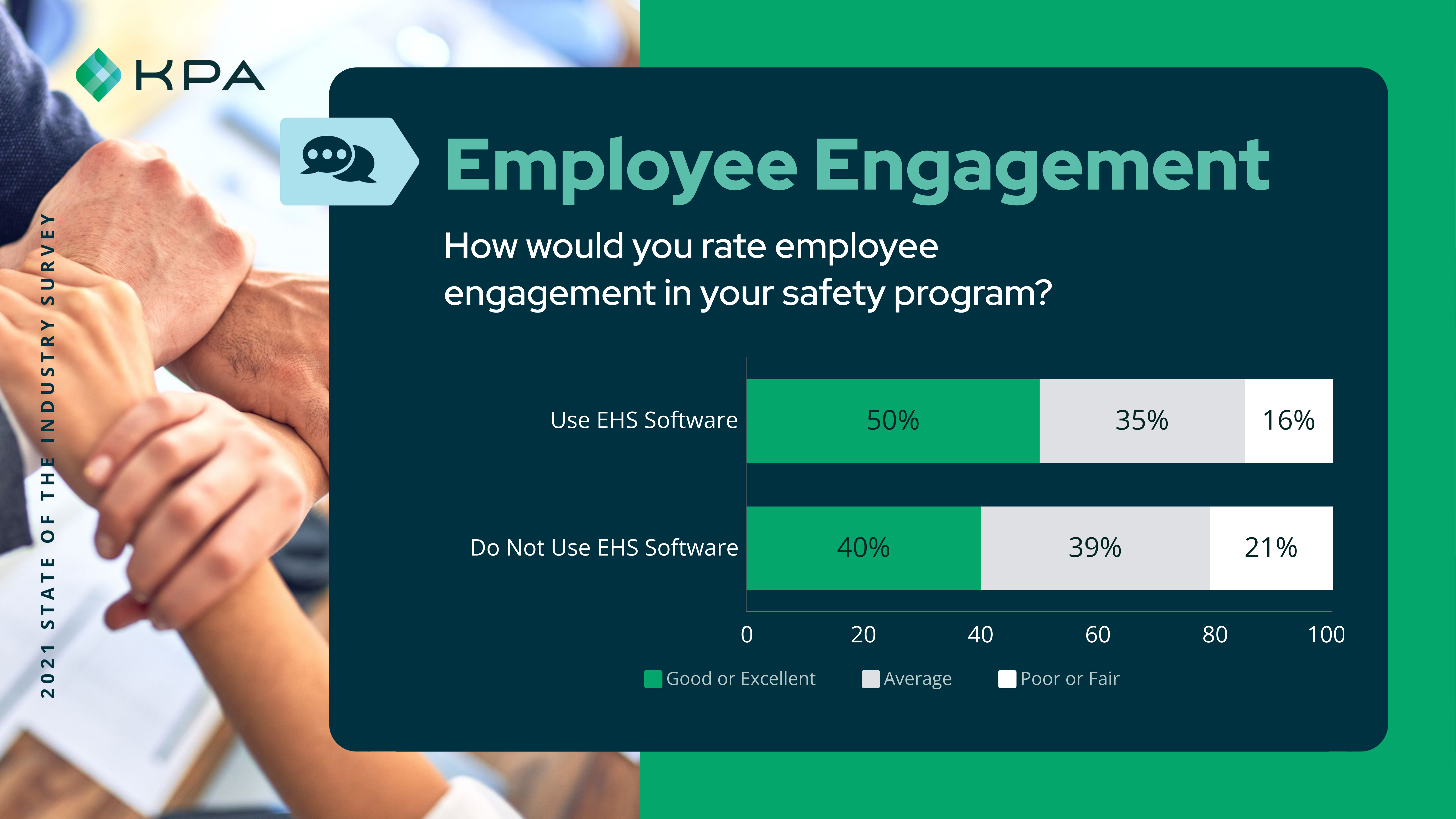How EHS Software Can Help with Employee Engagement: Behind the Numbers
How would you rate the employee engagement concerning your safety program? That’s a key question we posed in the 2021 EHS State of the Market Survey. And the results show that using EHS software may actually lead to better employee engagement.
Specifically, a majority of EHS managers that use EHS software said they would rate employee engagement at good or excellent, but non-software users were more likely to rate it at average, poor or fair.

So, why is this?
The survey data shows that EHS software users may have an easier time with engagement because they’re proactively connecting with workers about safety topics on a regular basis. And, they’re not just leaning on email to do it, either.
More than 60% of EHS software users said they have daily interaction with their workforce, but just above 30% of non-EHS software users reported having daily communication about safety with their workers.
Daily communication can be a strong motivator for keeping workers engaged in the safety culture.
Fortunately, EHS software tools can provide organizations with varied methods for reaching workers who need access to safety reminders and announcements while working in the field. And, they can give an organization a quick way of warn the workforce about areas where a lot of hazards have been experienced recently, so it can work to mitigate those risks.
Further, EHS software users were more likely to communicate important safety information to the workforce, such as policies, incidents, and safety measures, than non-software users in every category EHS Today polled them on. Specifically, the survey asked respondents on whether they used the following methods to engage with workers:
- Smaller team meetings, including Toolbox and Tailgate Talks
- Breakroom posters and reminders throughout the facility
- Companywide meetings
- Paper handouts
- One-on-one meetings with managers and employees
- Mobile and email alerts
Another interesting take away:
Besides impacting employee engagement, EHS software represents an eco-friendly and time-saving approach to communication.
A staggering 51% of non-software users reported using paper handouts to communicate with their workforce, but this percentage dropped to just 38% among EHS software users. The environmental impact is just one facet, too—think about the time and expense of printing out paper handouts to distribute to the workforce (not to mention there’s not a really good way to track receipt of paper-based communications to ensure that every employee has received and read it)!
Also while sending automated emails for upcoming and overdue tasks can prompt employees to take positive action to manage their safety obligations, just 17% of non-EHS software users are taking advantage of such technology to engage workers to do the right thing whereas 61% of software users do.
Suffice to say EHS software can help companies improve employee engagement, save time, and cut costs with an ecologically minded approach to safety. If you would like to learn more about how the creative ways EHS software can help achieve this triple win, please let us know.
